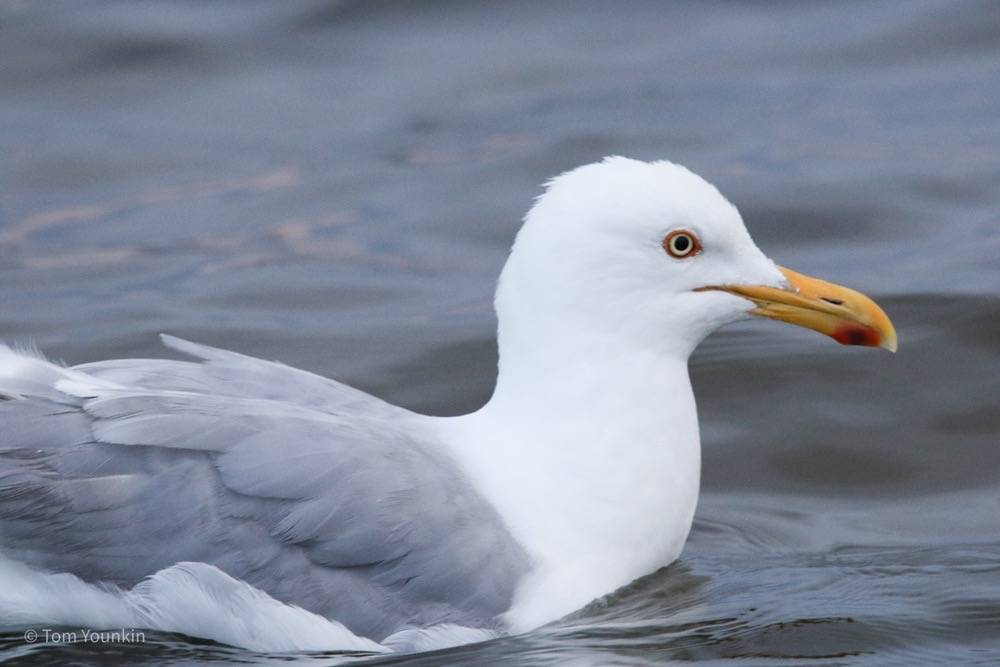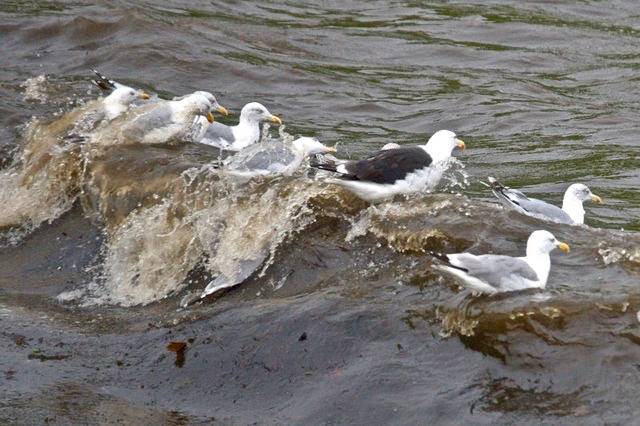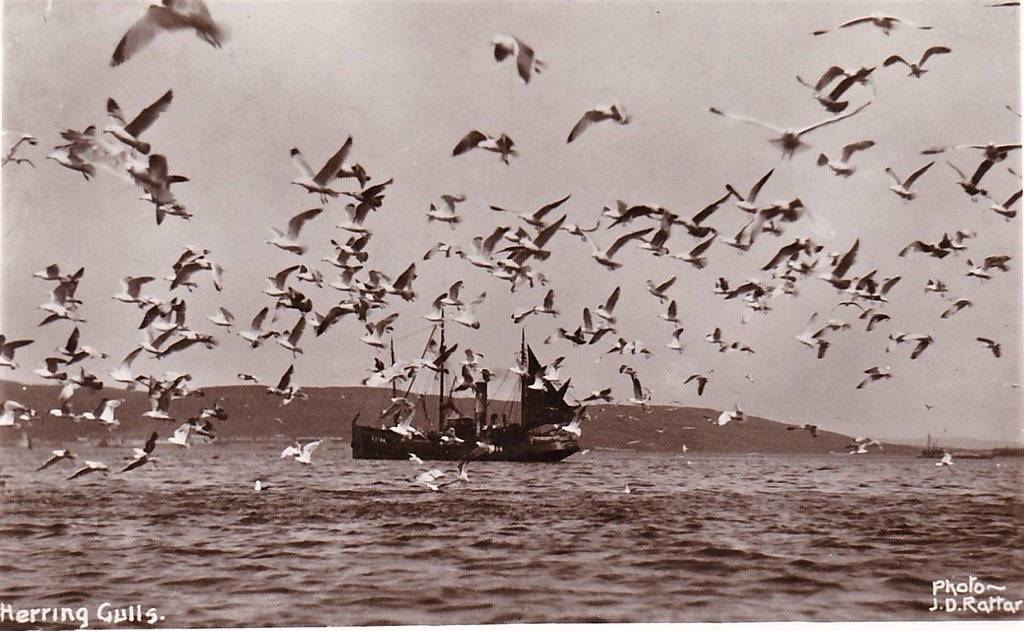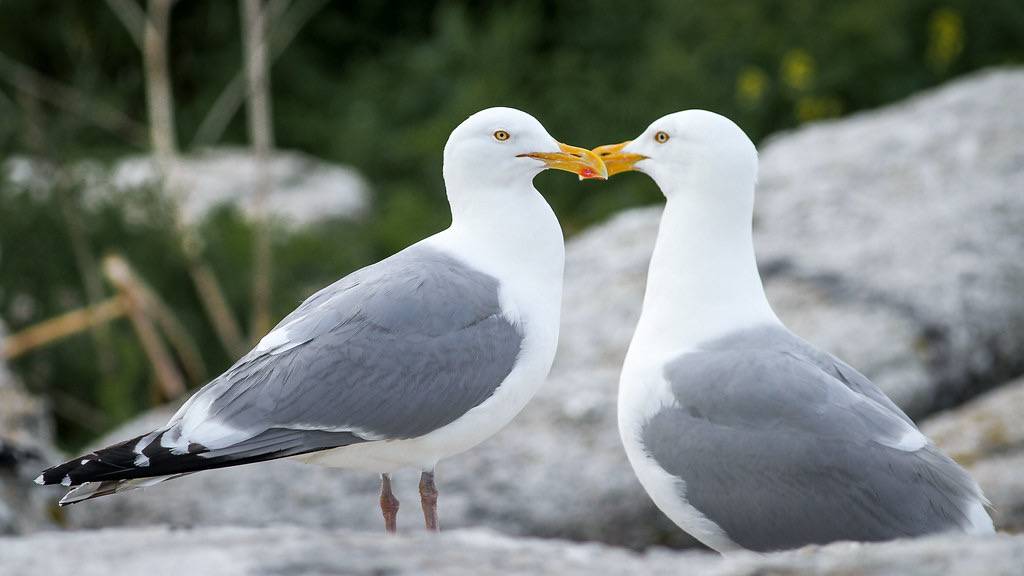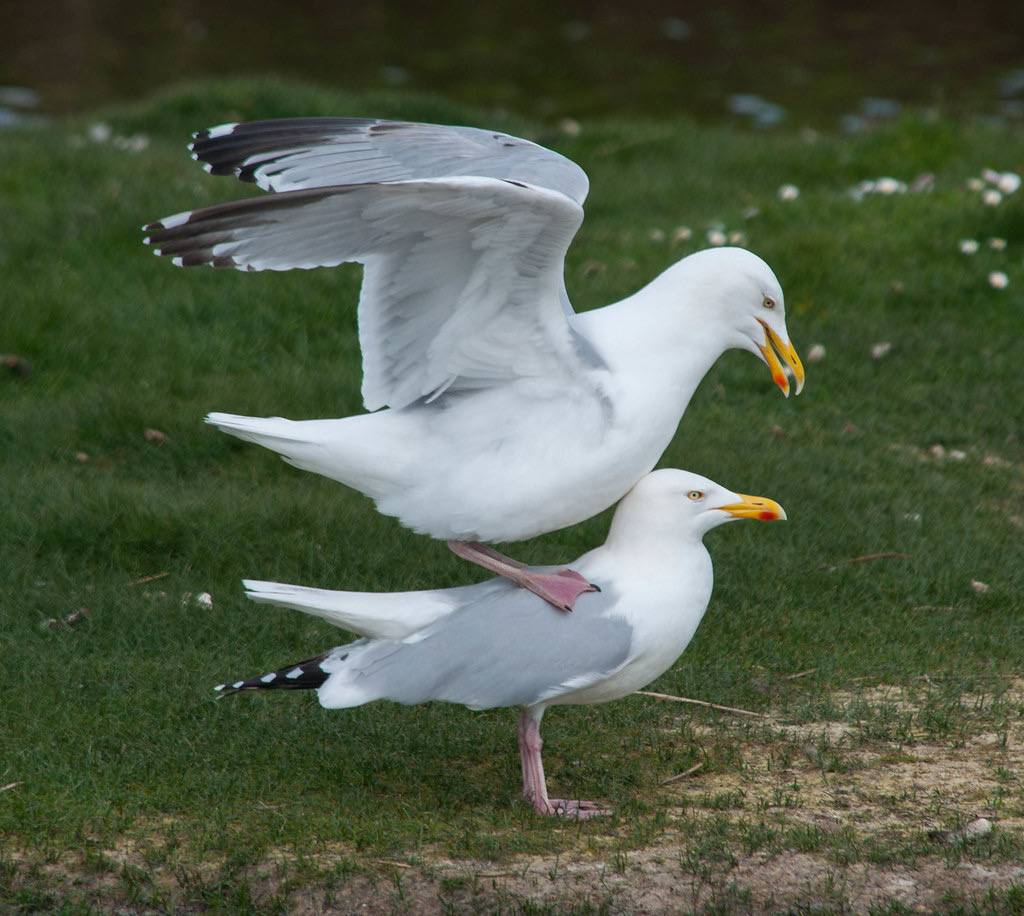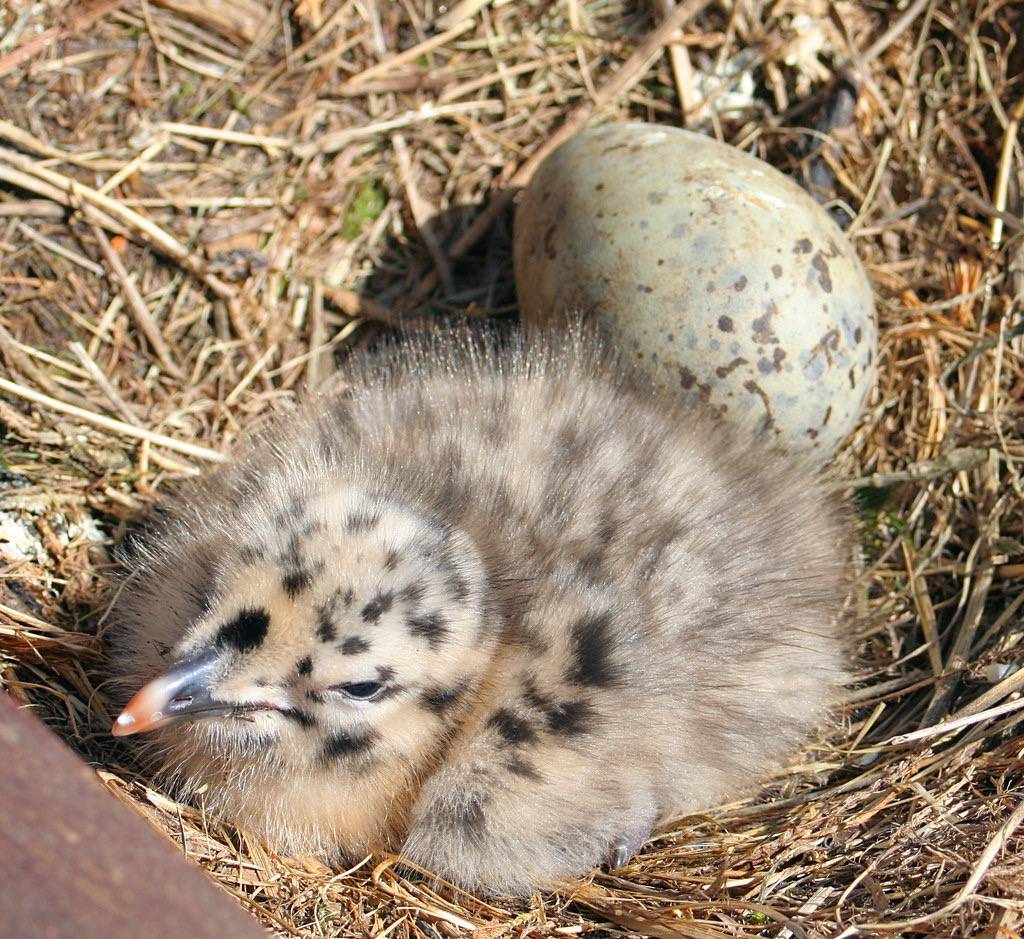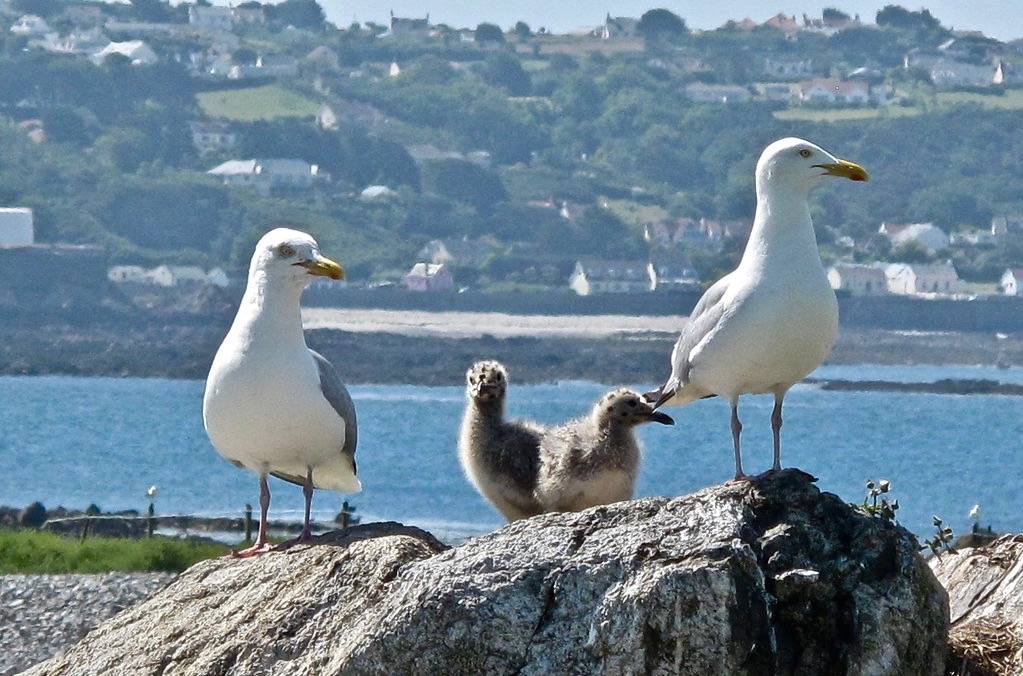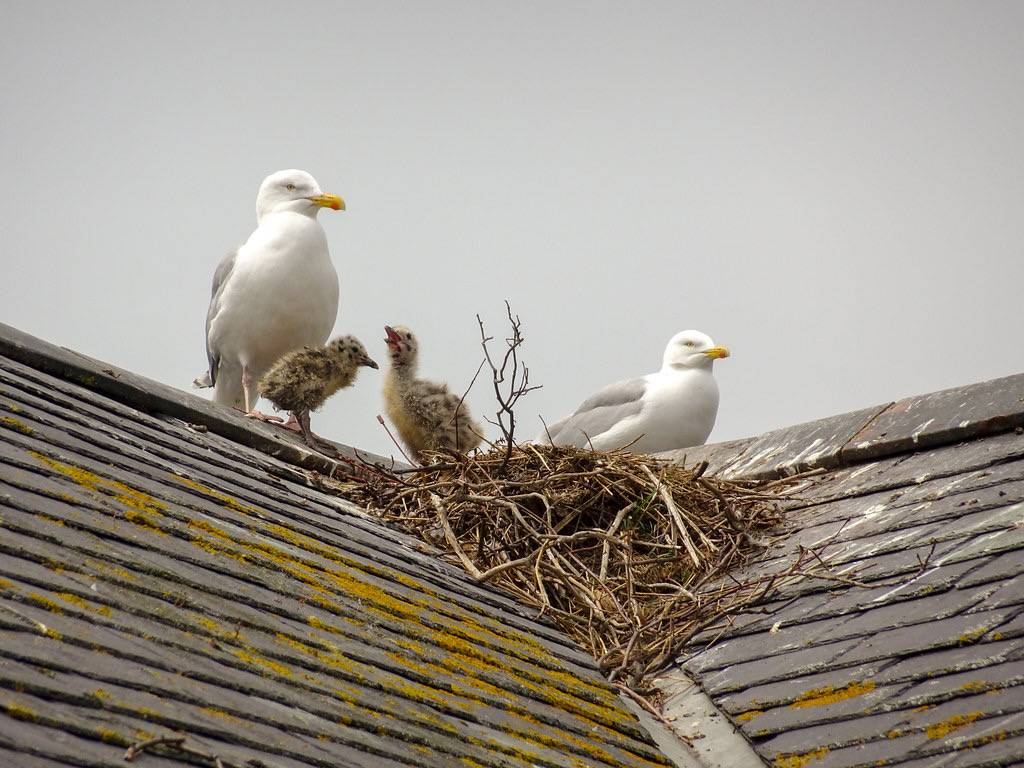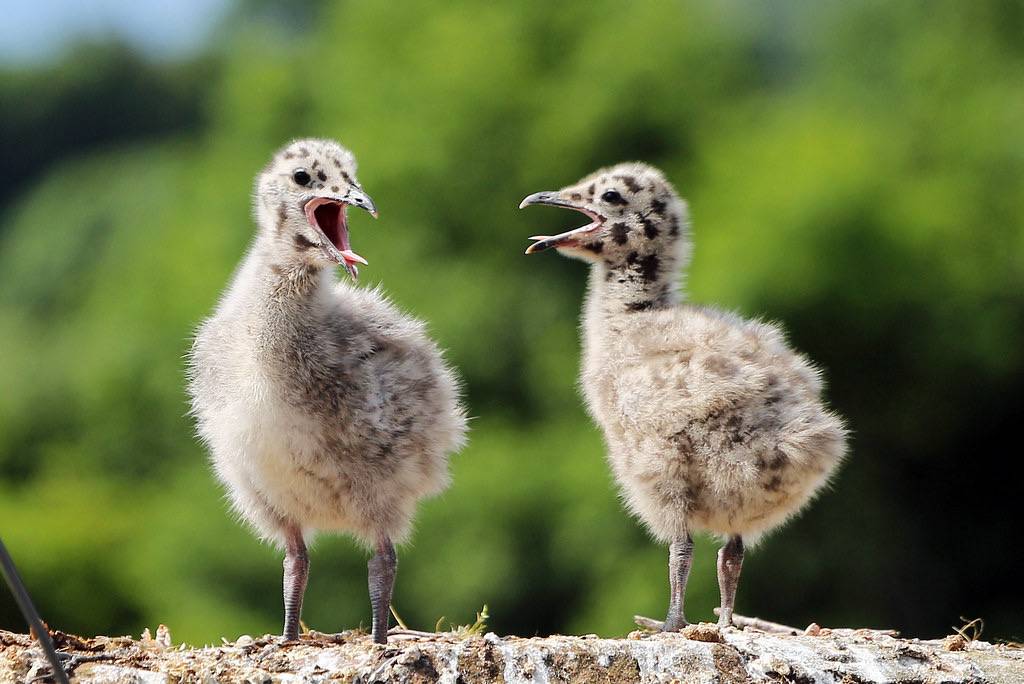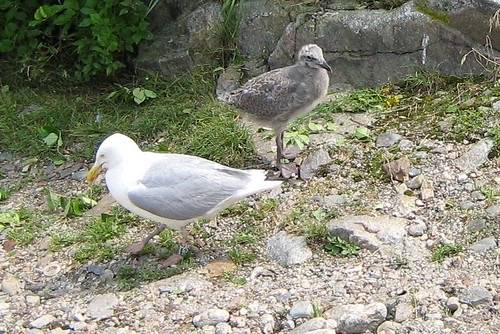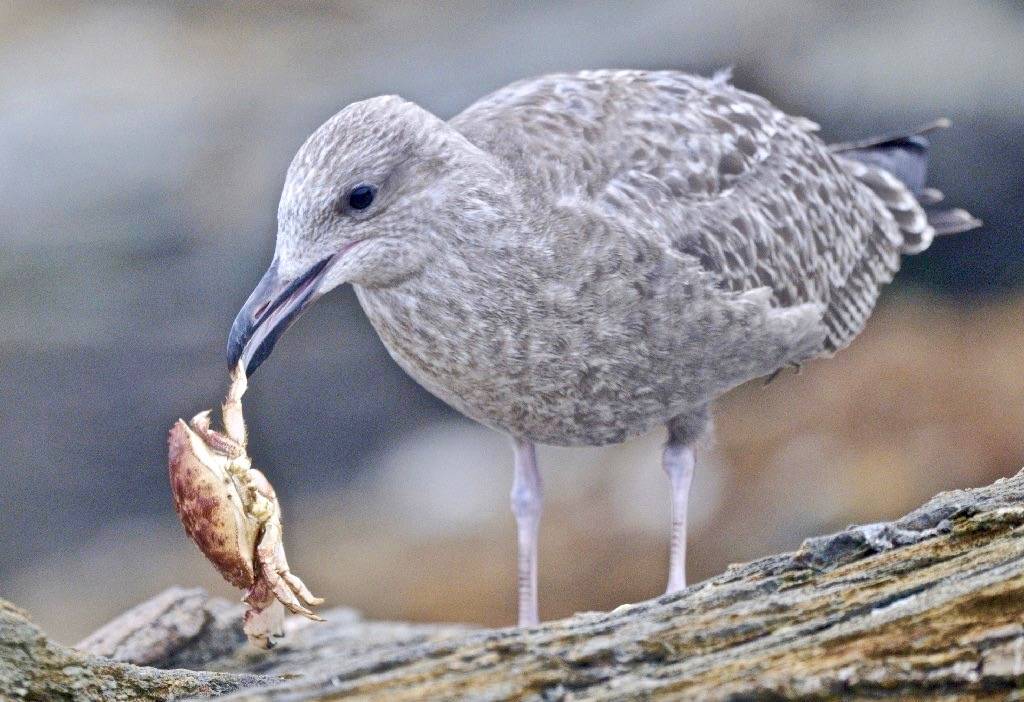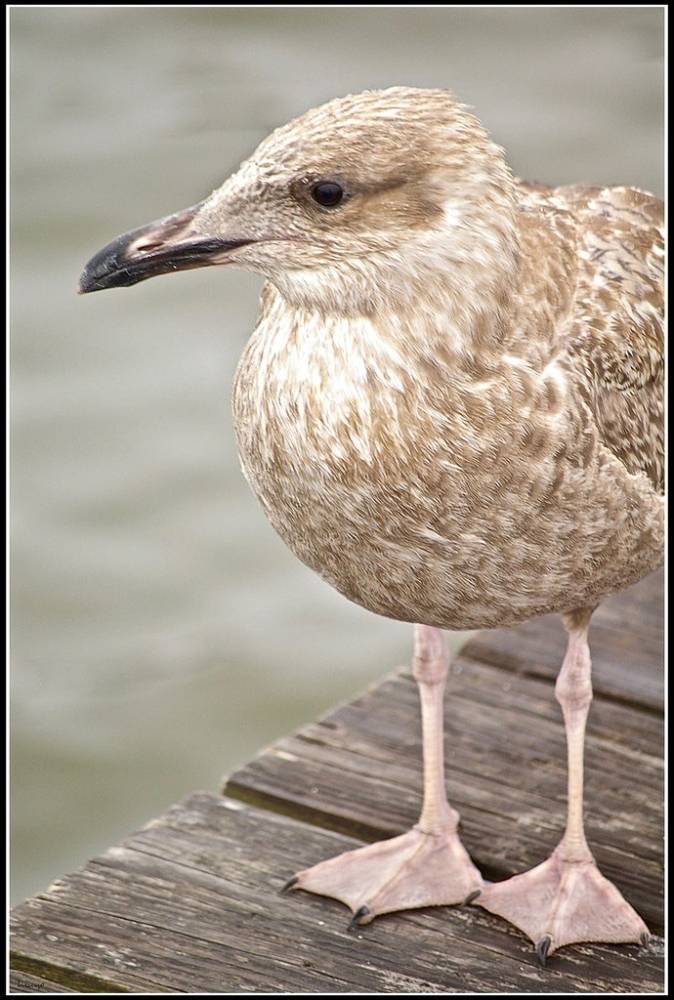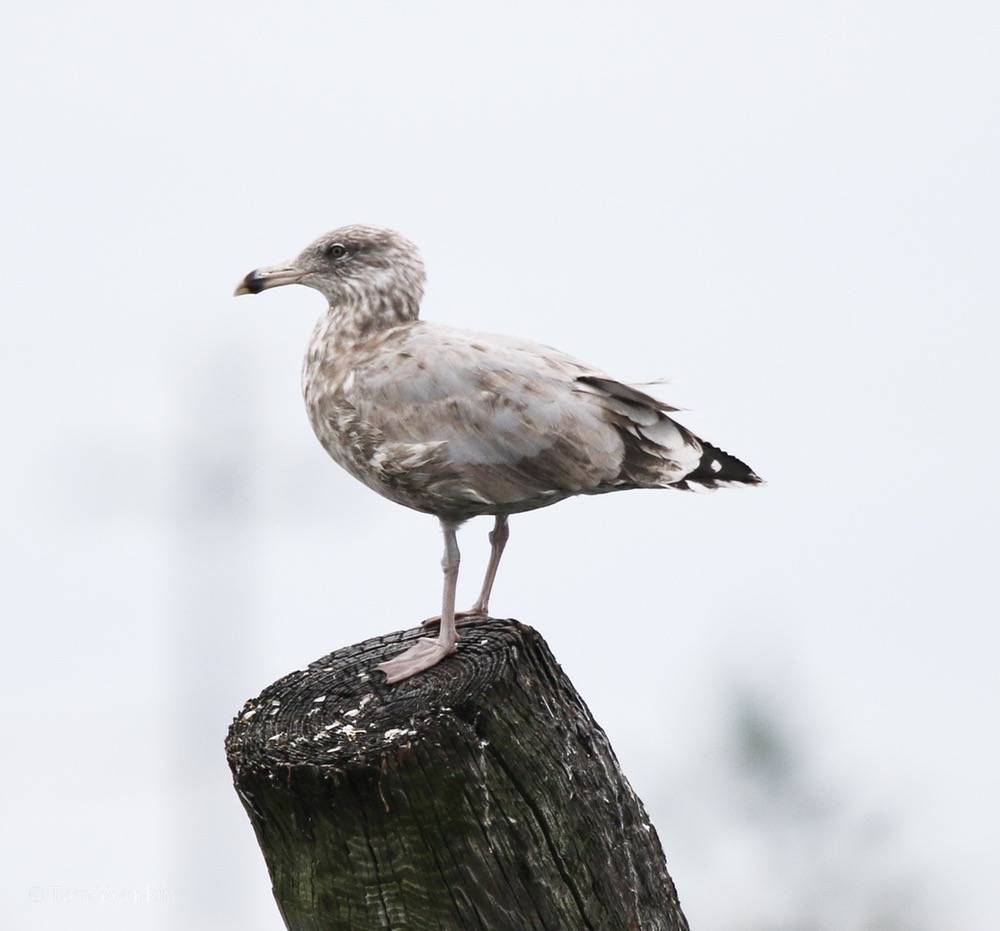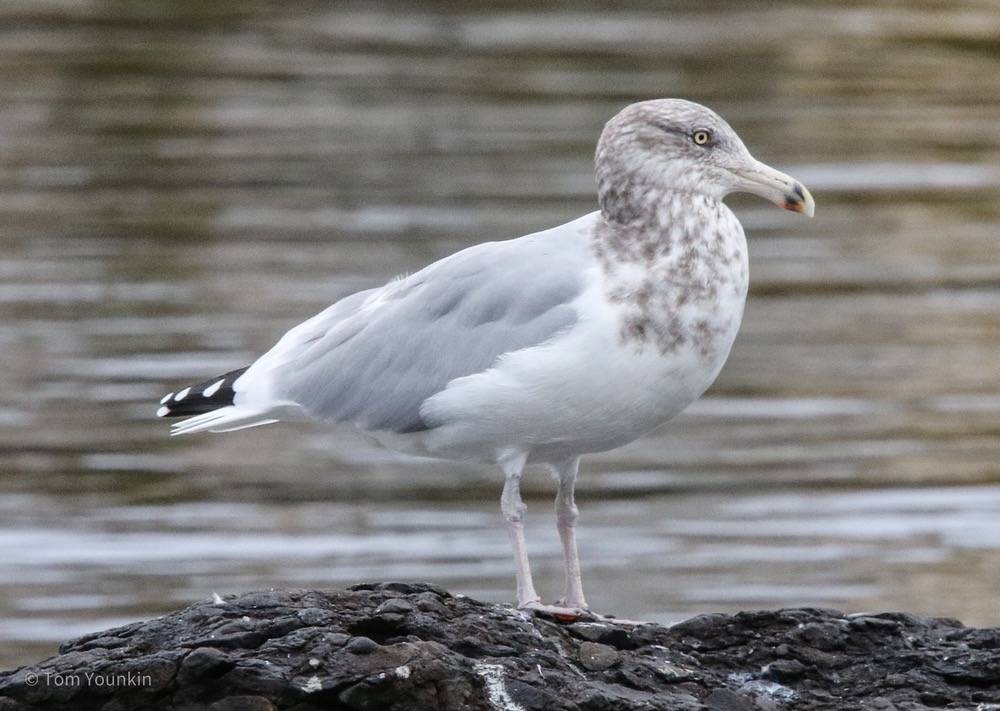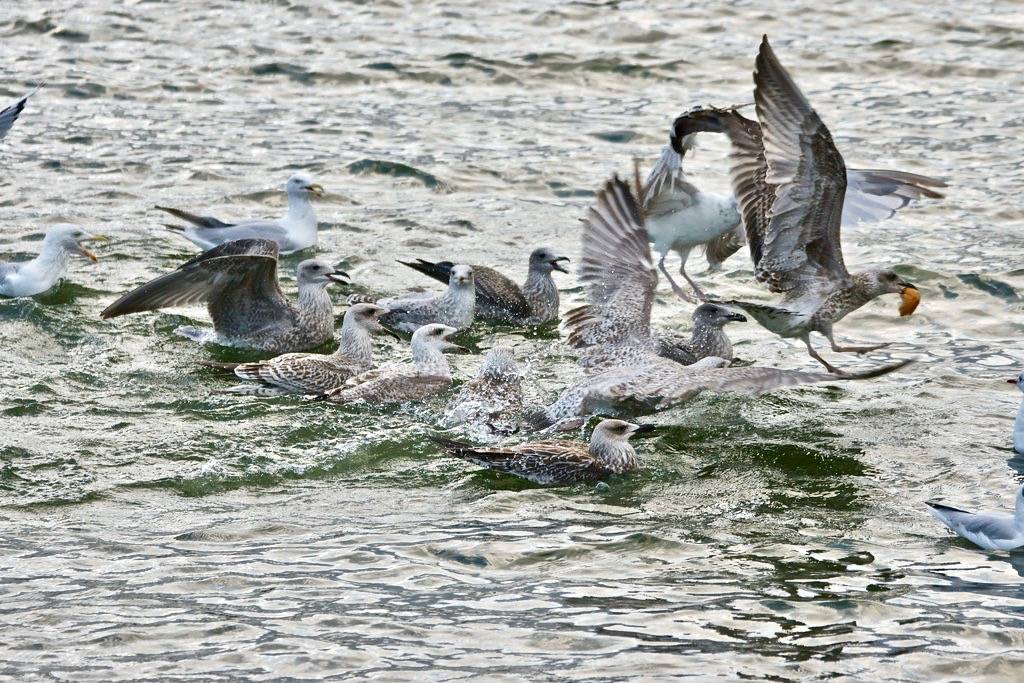Herring Gull
The Herring Gull occurs year round at Salter Grove but does not breed in the park. Only a few to a dozen are seen during the warmer months but during the winter, over a hundred birds may huddle together on the expanse of ice that forms in North Cove.
It can be seen flying over the park, foraging along the breakwater and nearby rocks, or floating in the water of North and South Coves. Six other gull species visit the park but to most visitors, the Herring Gull is the seagull.
In adult plumage, the Herring Gull is easily distinguishable from the larger Great Black-backed Gull. Unfortunately, the juveniles of both species have similarly mottled-brown plumage and are easily confused. However, when compared side by side, the smaller Herring Gull has a lighter and less checkered plumage. Silver-gray feathers appear on the back of juvenile Herring Gulls as they age whereas darker charcoal-brown feathers replace the juvenile feathers of Great Black-backed Gulls.
When viewed at a distance, Herring Gulls can be hard to distinguish from the smaller Ring-billed Gulls because both are silvery above. However, the Herring Gull has a stout yellow bill with a bright red dot near the tip of its lower bill, whereas the Ring-billed Gull has a black ring that encircles a more slender bill near its tip. Seagulls flying overhead are Herring Gulls if they have pink legs, and Ring-billed Gulls if they have yellow legs.
Herring Gulls are opportunistic feeders and have been documented to feed on carrion, crustaceans, earthworms, eggs and chicks of other birds, fish, food collected by other birds, human food wastes, insects, mollusks, sea urchins, and smaller seabirds. Individual gulls tend to specialize on one or two food types.
Herring Gulls at Salter Grove have been observed to crack clam and mussel shells by dropping them from the air onto rocks to get at the tender morsels inside. They often squabble with conspecifics or other species over food items but will defer to the larger Great Black-backed Gull.
Nesting colonies of numerous individuals can be found near water from Alaska, across northern Canada to the northeastern coast of the United States. By far, the largest colony of about 25,000 gulls was recorded in 1940 on Kent Island in the Bay of Fundy.
Adults will stay close to the breeding grounds throughout the year as long as the water bodies where they feed remain ice-free. Banding studies have shown that immature gulls tend to migrate the furthest, some reaching as far south as Mexico, Central America and the West Indies.

